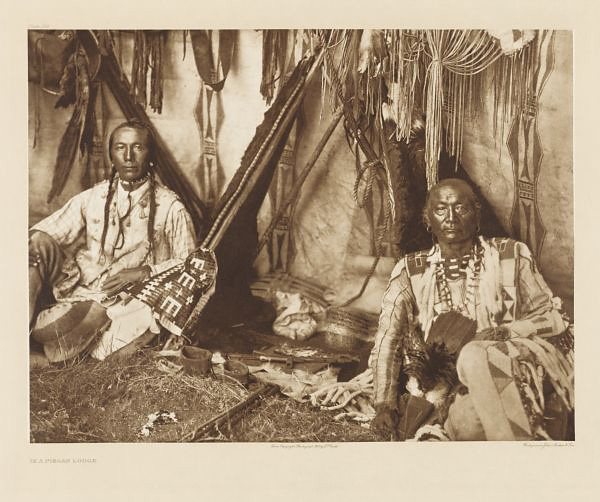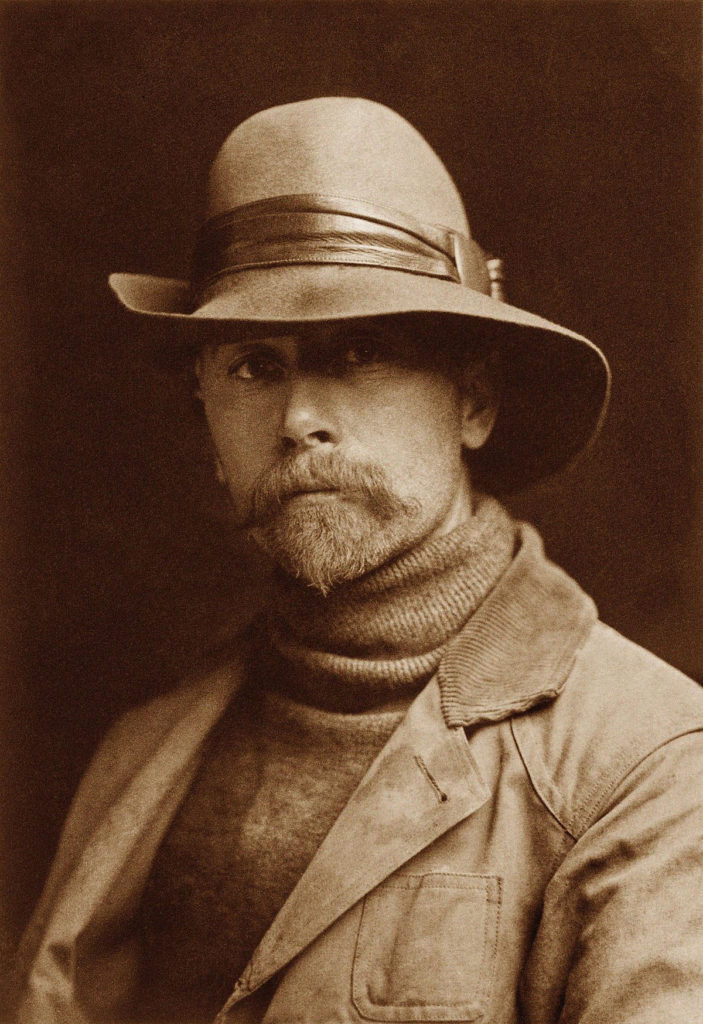
To coincide with our Edward Curtis exhibition showcasing images that are rarely shown in this area, we wanted to share some interesting facts with you about the famous photographer.
Many timelines show Edward Curtis’s birth date as February 16, 1868; however, family documents reveal that his birthday was actually February 19, 1868. The earlier date was a typo in a book published prior to Internet fact checking.
His middle name is spelled “Sherriff” – most articles and books show it incorrectly as “Sheriff” – another typo. The name is passed down from his maternal grandparents, Charles and Elizabeth Sherriff.
Curtis received only six years of classroom education. He is one of the most famous 20th Century photographers and had no formal training in art, history, et cetera.
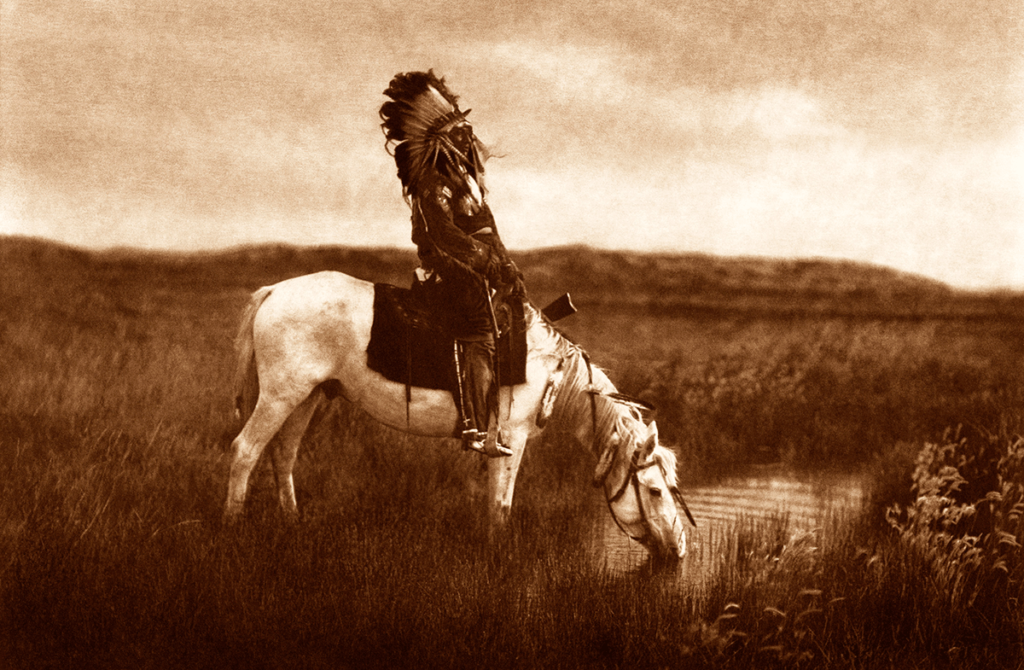
The North American Indian project began in 1897. It was originally planned to take 15 years, however, it ended up spanning three decades. Curtis impressed Roosevelt in 1905, which in turn, led to him meeting J. P. Morgan, the wealthiest man in the world at the time. Morgan probably contributed $1.5 Million, which was half the total cost of the project.
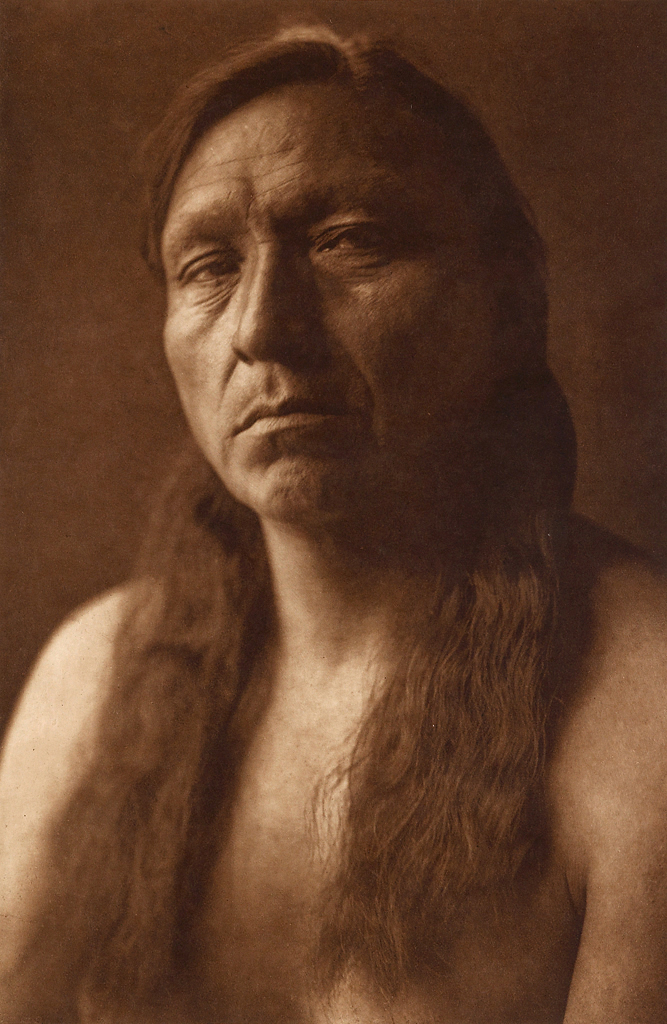
Curtis studied over 80 tribes (west of the Mississippi from Mexico to Alaska, beginning in the southwest with the Apache, Jicarilla, and Navaho) and took over 40,000 photographs. Each volume in the 20-volume series is approximately 300 pages long and contain in total 1,500 photogravure prints. Each volume is accompanied by a corresponding portfolio consisting of 36+ copperplate photogravures, totaling 722 plates.
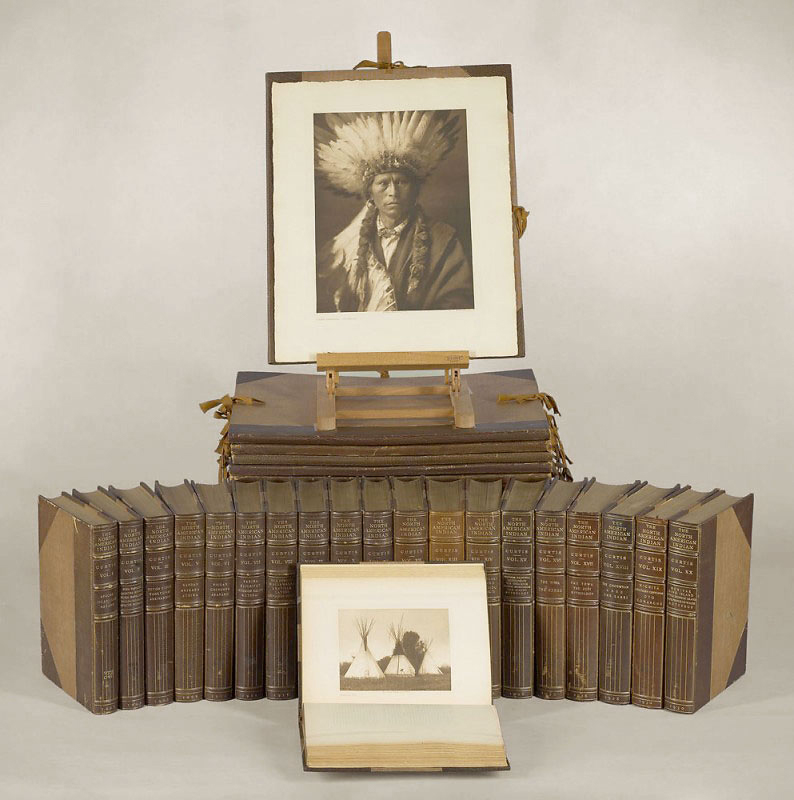
The volumes included information on all areas of Native American life: social and religious customs, mythology, ceremonies, history, medicine, foods, warfare, and arts. Also included were tribal summaries, biographical sketches, songs, and vocabularies. Curtis recorded over 10,000 songs, more than 700 of which are still intact in the University of Indiana archives.
Five hundred volumes of the collection were produced, of which only 272 are bound and are in rare book rooms of libraries – the Allen County Public Library in Fort Wayne is one of them – as well in the homes of private collectors. The cost of a Moroccan leather-bound set is estimated to be in the tens of thousands of dollars.
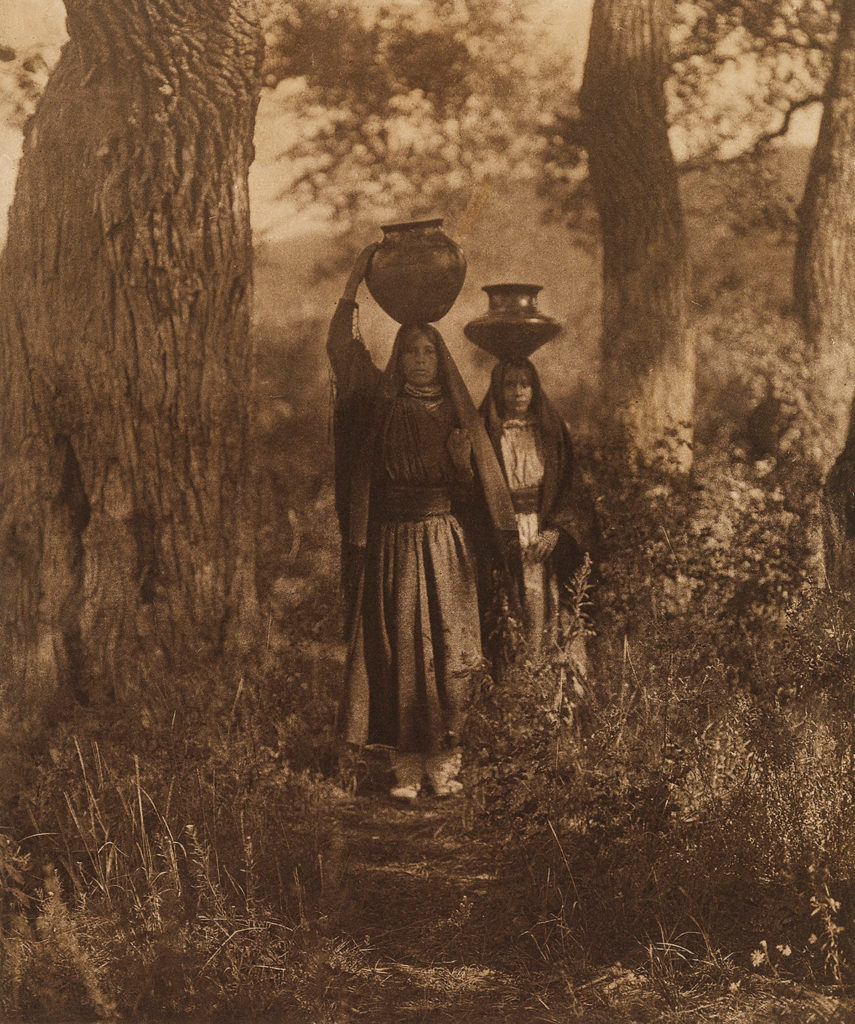
Curtis produced the motion picture In the Land of the Head Hunters (now renamed In the Land of the War Canoes) in 1914. It was cast entirely with members of the Kwakiutl tribe. From the 1920s – 1940s, Curtis worked in Hollywood creating portraits of stars and production stills for famous films like The Ten Commandments. Curtis staged an opera in 1911 at Carnegie Hall, depicting a “vanishing” race with accompanying music and films. He also wrote two books: Indian Days of Long Ago and In the Land of the Head Hunters (a narrative of his film).
Edward Curtis died aged 84 in Los Angeles in 1952. He never really reached the acceptance and success he had expected. Interest in Native Americans waned and his eventually lost traction. In the 1970s, a Santa Fe gallery owner uncovered a treasure trove of Curtis’ copper plates in the basement of a Boston bookstore, and interest in his work was revived.
In 2017 the International Photography Hall of Fame inducted Edward S. Curtis into its acclaimed ranks.
We are honored to have his work on display at the Garrett Museum of Art. Please treat yourself to viewing a selection of these photogravures up close and personal. The show is on display through March 27, 2022.
